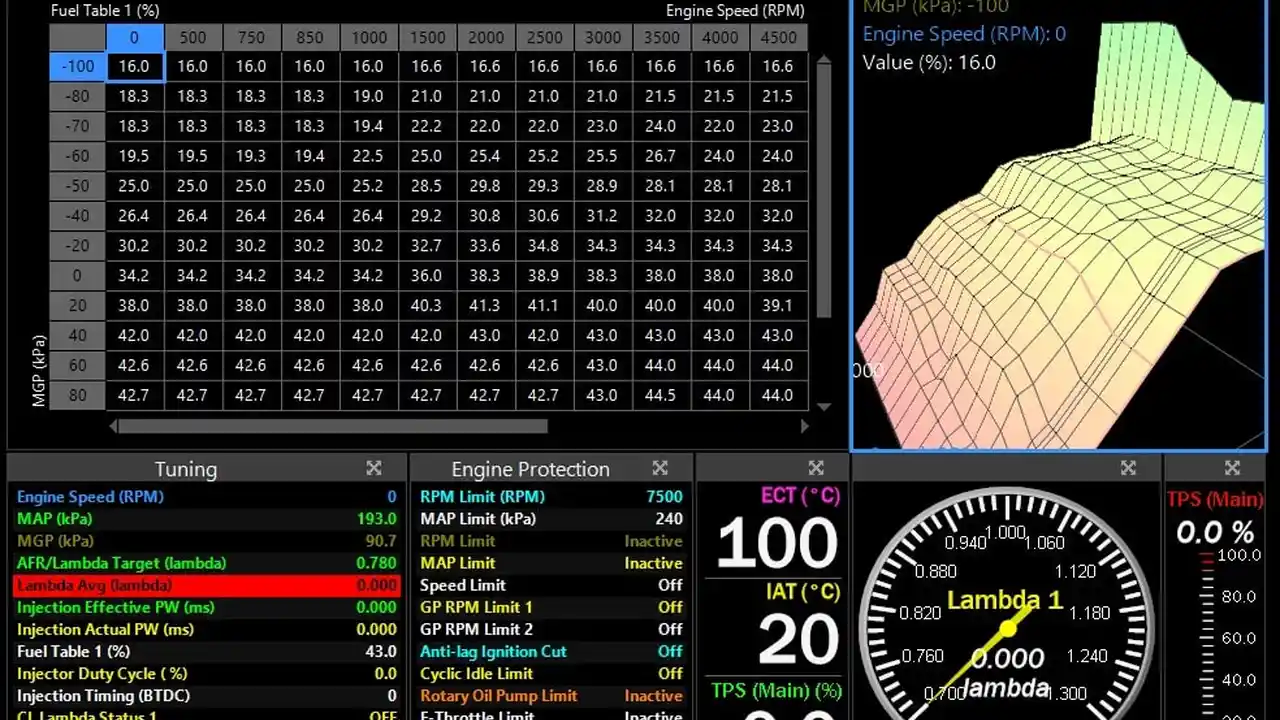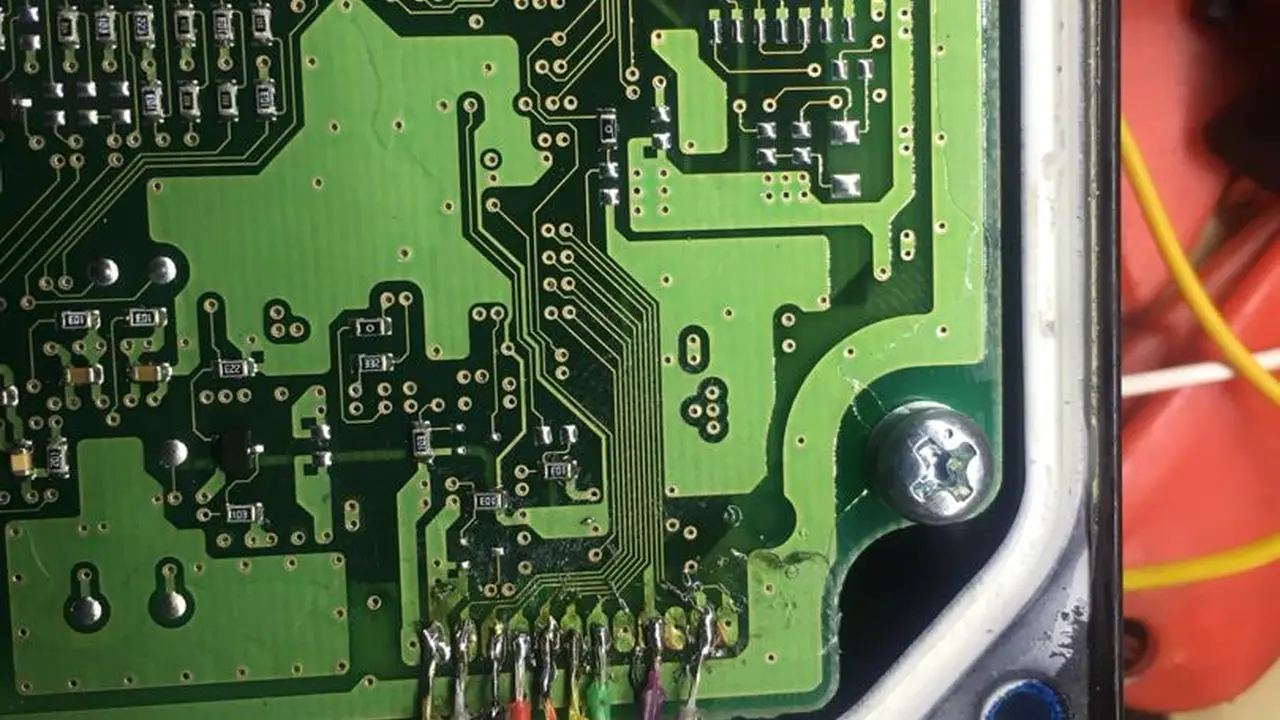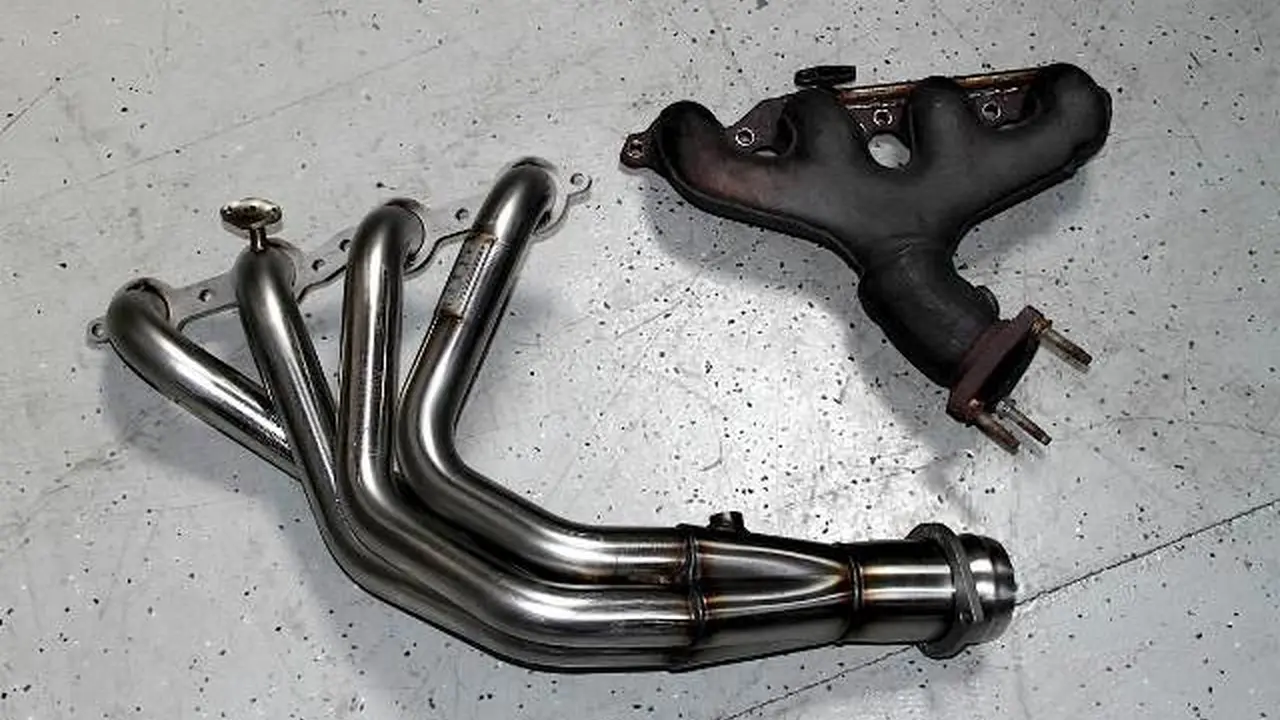ECU Mapping for Aftermarket Turbo Kits: Setup & Calibration
ECU Mapping for Aftermarket Turbo Kits Setup & Calibration

So, you've slapped a shiny new turbo kit onto your ride! Awesome! But bolting it on is only half the battle. Getting your ECU dialed in is absolutely crucial for reliable power and avoiding a melted engine. This guide will walk you through the setup and calibration process for aftermarket turbo kits, covering boost control, fuel delivery, and ignition timing adjustments. We're talking about optimizing your engine for reliable and powerful turbocharged performance. Let's get started!
Understanding the Basics of Aftermarket Turbo Kit ECU Mapping
Before diving into the specifics, let's cover some fundamental concepts. When you add a turbo, you're forcing more air into the engine. This means you need more fuel to maintain the correct air-fuel ratio (AFR). The ECU (Engine Control Unit) is responsible for managing this. Mapping, or tuning, the ECU involves adjusting parameters like fuel injection, ignition timing, and boost levels to optimize performance and ensure the engine runs safely.
Think of it like this: your engine is a finely tuned instrument. Adding a turbo is like adding a whole new section to the orchestra. You need to re-tune everything to make sure all the instruments are playing in harmony.
Key Components and Considerations for Turbo Kit ECU Mapping
Successfully mapping your ECU for a turbo kit involves understanding several key components and considerations:
* **Fuel Injectors:** Stock injectors are often insufficient for the increased fuel demands of a turbo engine. Upgrading to larger injectors is usually necessary. * **Fuel Pump:** Similar to injectors, the fuel pump needs to supply enough fuel to meet the engine's demands. A higher-flowing fuel pump is often required. * **Mass Airflow Sensor (MAF) or Manifold Absolute Pressure (MAP) Sensor:** These sensors measure the amount of air entering the engine. A larger MAF sensor or switching to a MAP sensor may be necessary to accurately measure the increased airflow. * **Boost Control:** Controlling the amount of boost produced by the turbo is critical. This can be done with a manual boost controller (MBC) or an electronic boost controller (EBC). * **Wideband O2 Sensor:** A wideband O2 sensor provides accurate AFR readings, which are essential for tuning. * **ECU Tuning Software:** You'll need software to access and modify your ECU's maps. Popular options include Cobb Accessport, EcuFlash, and standalone ECU systems like Haltech or AEM.Step-by-Step Guide to ECU Mapping for Aftermarket Turbo Kits
Here's a general step-by-step guide to ECU mapping for aftermarket turbo kits. **This is a simplified overview and should not be considered a complete substitute for professional tuning.** If you're not comfortable with this process, seek the assistance of a qualified tuner!
- **Install the Turbo Kit:** Follow the turbo kit manufacturer's instructions carefully. Ensure all components are properly installed and connected.
- **Install Upgraded Components:** Install any necessary upgraded components, such as fuel injectors, fuel pump, and MAF sensor.
- **Install Wideband O2 Sensor:** Install a wideband O2 sensor if your kit doesn't include one.
- **Load a Base Map:** Load a base map that is specifically designed for your turbo kit and engine configuration. Many tuning software platforms offer base maps as a starting point. **Do not drive the car hard on a base map. It's just a starting point!**
- **Data Logging:** Start the engine and begin data logging. Monitor parameters such as AFR, boost pressure, ignition timing, and knock.
- **Adjust Fuel Maps:** Adjust the fuel maps to achieve the target AFR. Aim for a slightly rich AFR under boost to prevent detonation. A good starting point is around 11.5:1 to 12.5:1 AFR.
- **Adjust Ignition Timing:** Adjust the ignition timing to optimize power without causing knock. Start with conservative timing and gradually increase it while monitoring for knock.
- **Tune Boost Control:** Tune the boost control system to achieve the desired boost levels. Start with low boost levels and gradually increase them while monitoring for knock.
- **Refine the Tune:** Continue data logging and adjusting the maps until you achieve optimal performance and safe engine operation.
- **Dyno Tuning (Recommended):** For the most accurate and reliable results, take your car to a dyno tuning shop. A professional tuner can fine-tune the ECU on a dyno, ensuring optimal performance and safety.
Boost Control Strategies for Turbocharged Engines
Controlling boost is crucial for both performance and engine longevity. Here are a few common boost control strategies:
* **Manual Boost Controller (MBC):** A simple and inexpensive way to control boost. It allows you to adjust the amount of pressure that reaches the wastegate actuator, effectively controlling boost levels. * **Electronic Boost Controller (EBC):** More sophisticated than an MBC, an EBC uses a solenoid valve to precisely control boost levels. EBCs offer more features, such as boost-by-gear and overboost protection. * **ECU-Controlled Boost:** Some ECUs have built-in boost control functionality. This allows you to control boost levels directly through the ECU.Fuel Delivery Considerations for Turbo Kit ECU Mapping
Adequate fuel delivery is essential for preventing lean conditions and engine damage. Consider the following:
* **Fuel Injector Sizing:** Calculate the required fuel injector size based on your horsepower goals. There are many online calculators available. * **Fuel Pump Selection:** Choose a fuel pump that can supply enough fuel to meet the engine's demands at the target boost level. * **Fuel Pressure Regulator:** A fuel pressure regulator maintains consistent fuel pressure, ensuring proper fuel delivery.Ignition Timing Adjustments for Turbocharged Applications
Adjusting ignition timing is crucial for optimizing power and preventing knock. Remember to always start conservatively and gradually increase timing while monitoring for knock.
* **Retard Timing Under Boost:** Turbocharged engines typically require less ignition timing under boost than naturally aspirated engines. * **Monitor for Knock:** Use a knock sensor or knock detection software to monitor for knock. If knock is detected, immediately retard the timing.Recommended Products and Price Points
Let's talk about some specific products you might need and their approximate price points. Keep in mind that prices can vary depending on the brand, vendor, and any current sales.
Fuel Injectors:
* **Injector Dynamics ID1050x:** These are a popular choice for many applications, offering excellent flow and atomization. *Price: ~$600-800 per set* * **Use Case:** Street/Track cars making moderate to high horsepower. * **Comparison:** Offers better atomization compared to cheaper brands, leading to smoother idle and better fuel economy. * **DeatschWerks DW300 Series Injectors:** A more budget-friendly option that still offers good performance. *Price: ~$400-600 per set* * **Use Case:** Daily drivers or mild performance builds. * **Comparison:** Not as refined as Injector Dynamics but provides adequate flow for many applications.Fuel Pumps:
* **AEM 340LPH Fuel Pump:** A popular and reliable in-tank fuel pump. *Price: ~$150-200* * **Use Case:** Most applications requiring more fuel than the stock pump can deliver. * **Comparison:** A direct drop-in replacement for many vehicles. * **Walbro 450LPH Fuel Pump:** For high-horsepower builds requiring serious fuel flow. *Price: ~$200-250* * **Use Case:** High horsepower builds or those running E85. * **Comparison:** Requires more modifications for installation compared to the AEM 340LPH.ECU Tuning Software/Hardware:
* **Cobb Accessport:** A user-friendly tuning solution for many popular vehicles, like Subaru, Mazda, and Ford. *Price: ~$600-800* * **Use Case:** Easy to use, pre-loaded maps, data logging capabilities. * **Comparison:** Limited to supported vehicles. * **Haltech Elite Series:** A standalone ECU offering maximum flexibility and control. *Price: ~$1500-3000+ (depending on features)* * **Use Case:** Custom builds, advanced tuning needs, full control over engine parameters. * **Comparison:** Requires more technical knowledge and tuning experience.Boost Controllers:
* **GrimmSpeed Manual Boost Controller:** A simple and effective manual boost controller. *Price: ~$100* * **Use Case:** Basic boost control, simplicity. * **Comparison:** Requires manual adjustment, no advanced features. * **AEM Tru-Boost X Electronic Boost Controller:** An electronic boost controller with advanced features like boost-by-gear. *Price: ~$300-400* * **Use Case:** Precise boost control, advanced features, data logging. * **Comparison:** More complex to set up but offers superior control.Common Mistakes to Avoid During Turbo Kit ECU Mapping
Turbo kit ECU mapping can be tricky. Here are some common mistakes to avoid:
* **Running Too Lean:** A lean condition can cause detonation and engine damage. Always err on the side of being slightly rich. * **Excessive Ignition Timing:** Too much ignition timing can also cause detonation. Start with conservative timing and gradually increase it while monitoring for knock. * **Ignoring Knock:** Knock is a sign that something is wrong. Immediately address any knock issues. * **Using an Inadequate Fuel System:** Make sure your fuel system can supply enough fuel to meet the engine's demands. * **Failing to Data Log:** Data logging is essential for monitoring engine performance and identifying potential problems. * **Not Seeking Professional Help:** If you're not comfortable with the tuning process, seek the assistance of a qualified tuner.The Importance of Professional Dyno Tuning
While you can do some basic tuning on the street, professional dyno tuning is highly recommended. A dyno allows a tuner to simulate real-world driving conditions and fine-tune the ECU for optimal performance and safety. They can monitor various parameters in real-time and make precise adjustments to the maps.
Think of it as taking your car to a doctor for a check-up. They have the tools and expertise to diagnose any problems and prescribe the right treatment.
Mapping your ECU for an aftermarket turbo kit is a critical process that requires careful planning, execution, and attention to detail. By understanding the key components, following the proper steps, and avoiding common mistakes, you can optimize your engine for reliable and powerful turbocharged performance. And remember, when in doubt, seek the assistance of a qualified tuner!
:max_bytes(150000):strip_icc()/277019-baked-pork-chops-with-cream-of-mushroom-soup-DDMFS-beauty-4x3-BG-7505-5762b731cf30447d9cbbbbbf387beafa.jpg)






